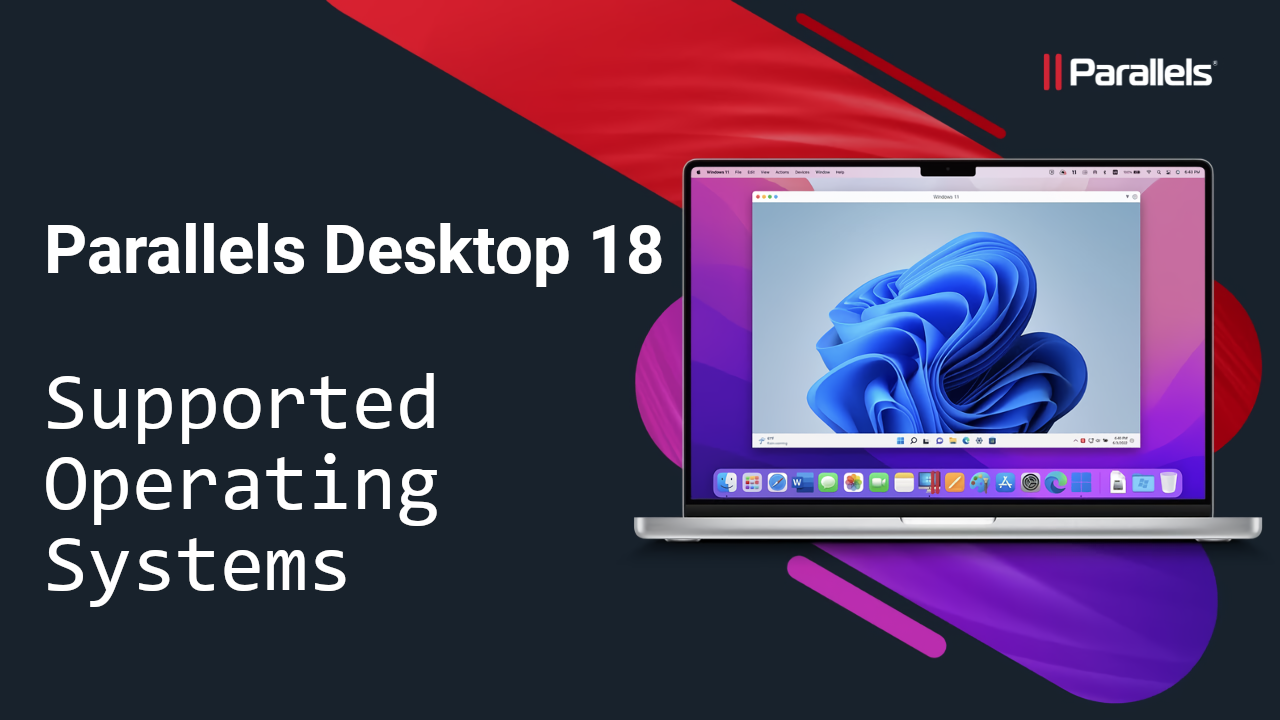Parallels Desktop is a very useful application that can help you get more value out of your Mac. It allows you to install other operating systems on your Mac computer. You can even switch between OS X and the other OS on the fly. Because these operating systems are not actually in control of your Mac, Parallels calls them “guest operating systems”. The most obvious – and the most useful – operating system to install is, of course, Microsoft Windows. It is the most popular OS in the world, so naturally it receives most programs and games. But you can also install, for example, old versions of OS X to run 32-bit Mac applications. Or you can install Linux, or FreeBSD, or even Android. The article below contains a list of all operating systems officially supported by Parallels Desktop 18, the most recent version of Parallels.
Parallels Desktop 18 supported operating systems on M-series Macs
Mac computers running M-series chips (M1 and M2) are great to use, but have issues with certain software. Parallels Desktop 18 is no exception to this. Only a few operating systems are officially supported.
Windows operating systems:
- Windows 11 is the only supported version
Apple operating systems:
- macOS Monterey 12
- macOS Ventura 13
Linux operating systems:
- Ubuntu Linux 22.04, 21.10, 21.04, 20.10, 20.04
- Fedora Workstation 36, 35, 34, 33-1.2
- Debian GNU/Linux 11, 10
- Kali Linux 2022.2, 2022.1, 2021.3
- You may be able to install other Linux distributions that have ARM support, however this is not supported officially
Parallels Desktop 18 supported operating systems on Intel Macs
Parallels Desktop 18 for Intel Macs, on the other hand, support a wide selection of operating systems, including some very old ones. This is great for compatibility reasons; this means you can run very old Windows software and 32-bit macOS software.
Windows operating systems:
- Windows 11
- Windows 10
- Windows 8.1
- Windows 8
- Windows 7 (SP0-SP1)
- Windows Vista Home, Business, Ultimate and Enterprise (SP0-SP2)
- Windows XP (SP0-SP3)
- Windows 2000 Professional SP4
Windows Server operating systems:
- Windows Server 2022
- Windows Server 2019
- Windows Server 2016
- Windows Server 2012 R2
- Windows Server 2008 R2 (SP0-SP2)
- Windows Server 2003 R2 (SP0-SP2)
- Windows 2000 Server SP4
Apple operating systems:
- macOS Ventura 13.0
- macOS Monterey 12.0
- macOS Big Sur 11.0
- macOS Catalina 10.15
- macOS Mojave 10.14.x
- macOS High Sierra 10.13.x
- macOS Sierra 10.12.x
- OS X El Capitan 10.11.x
- OS X Yosemite 10.10.x
- OS X Mavericks 10.9.x
- OS X Mountain Lion 10.8.x
- OS X Lion 10.7.x
- OS X Lion Server 10.7.x
- Mac OS X Snow Leopard Server 10.6.x
- Mac OS X Leopard Server 10.5.x
Linux operating systems:
- Red Hat Enterprise Linux (RHEL) 9, 8 and 7
- CentOS Linux 9 Stream, 8, 7
- Fedora Linux 36, 35, 34, 33
- Ubuntu 22.04 LTS, 21.10, 21.04, 20.04 LTS, 18.04 LTS, 16.04 LTS
- Debian GNU/Linux 11, 10
- Suse Linux Enterprise 15
- OpenSUSE Linux 15.2, 15.1, 15
- Linux Mint 20, 19
- Kali 2022.2, 2022.1, 2020.2, 2019, 2018
- Elementary OS 6, 5
- Manjaro 21, 19, 18
- Mageia 8, 7
- Gentoo Linux
- Boot2Docker
Other operating systems:
- Solaris 11, 10
- openBSD 6
- FreeBSD 12, 11
- openVZ 7
- eComStation 2, 1.2
- ReactOS 0.4
- Android OS
- You may be able to install other operating systems as well, even though they’re not officially supported
Download Parallels Desktop
If Parallels Desktop supports the operating system that you want to install, you can easily download it by using the button below. If the OS you’re interested in is not on the list, you may still download Parallels Desktop. It provides a free trial option, so you can check whether the OS works or not by trying to install it yourself.


